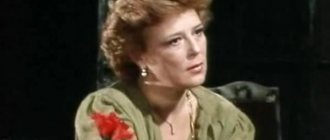Young Adolf Hitler
Hitler showed an early interest in German nationalism by rejecting the authority of Austria-Hungary. This nationalism would become the driving force behind Hitler's life.
In 1903, Hitler's father died suddenly. Two years later, the mother allowed her son to leave school. After her death in December 1907, Hitler moved to Vienna and worked as a temporary worker and watercolor artist. Hitler applied to the Academy of Fine Arts twice and was rejected both times.
Having no money outside of his orphan pension and funds from selling postcards, he remained in homeless shelters. Hitler later pointed to these years as the time when he first cultivated his anti-Semitism, although there is some debate about this account.
In 1913, Hitler moved to Munich. With the outbreak of World War I, he turned to serve in the German army. He was accepted in August 1914, although he was still an Austrian citizen.
Although Hitler spent most of his time away from the front lines (with some reports that his memories of his time on the field tend to be exaggerated), he was present at a number of important battles and was wounded at the Somme. He was decorated for his bravery, receiving the Iron Cross First Class and the Black Badge.
Hitler became embittered over the collapse of the war. The experience strengthened his passionate German patriotism, and he was shocked by Germany and the surrender in 1918; like other German nationalists, he allegedly believed that the German army had been betrayed by civilian leaders and Marxists.
He found the Treaty of Versailles humiliating, in particular the demilitarization of the Rhineland and the condition that Germany accept responsibility for starting the war.
Adolf Hitler: biography of a man who knew about the “incineration” in his own family
The unexpected defeat in the First World War put an end to the history of the German Empire. The Weimar Republic “in ruins” was weak and unviable: the people were in terrible poverty, and the economy was torn to shreds by the victorious states demanding payments. Total poverty and nationwide humiliation have become fertile ground for the growth of all kinds of radical sentiments in society. It was in such a situation that one of the most condemned and hated persons in the future, Adolf Hitler, loomed on the horizon. At that time, no one even guessed that soon the “Thousand-Year Reich”, which he was carefully building, would turn into almost the most terrible hell of human history.
Important
In the early days of his chancellorship, Hitler carried out a Herculean task of imposing Nazi principles and ideology on a variety of institutions. He did everything to provide his party with maximum control: over culture, education, the economy, and legislation. Trade unions were abolished, and good-natured German burghers were forced to join various organizations of a nationalist nature. By July thirty-three the deed was done - the only non-banned (allowed) party in Germany was the NSDAP.
The first enemy of humanity
The future ideologist of Nazism did not immediately become a monster who destroyed millions of innocent lives. He wrote short stories, poems and novellas quite well, and also painted good landscapes, but he never received a higher education. When the First World War broke out, he signed up as a volunteer. It was in the trenches under a hail of bullets that he became acquainted with the ideas of National Socialism and was imbued with them to the depths of his soul. After taking office as chancellor, based on the ideas of maximum authoritarianism and racial inequality, Hitler confidently abolished the main freedoms and began building a new supposedly people's state.
In theory, the idea was to unite all social strata, as well as regions, under the leadership of a single person. It is clear that this person was supposed to be Hitler - an ideal citizen, luminary and demigod, adored by everyone. In reality it turned out somewhat differently. The Third Reich quickly became a police state in which anyone could be arrested and even executed. All members of the country's government became obedient puppets of the Fuhrer, and politics revolved only around his “priceless” figure. The outcome of this view of state building was predetermined in advance, as was the fate of the first enemy of humanity.
Birth and childhood of Adolf
The popular German philologist of the first half of the twentieth century, Max Gottschald, who studied proper names, believed that the surname Hitler (Hiedler or Hittlaer) comes from the German noun Waldhütler, which means “forester” or “keeper,” and is identical to Hütler. The origin of the word is originally German, but it should be understood that this does not always indicate belonging to a particular nation or race.
The father of the future evil genius, Alois Hitler, was the son of an unmarried peasant woman, so at birth he received his surname from his mother - Schicklgruber. His biological father could have been Johann Georg Hiedler or his brother Nepomuk Güttler. According to another version, Adolf’s grandfather could have been the son of the banker Leopold Frankenberger, and this one was definitely a Jew. However, a German historian who closely studies this family argued that such a situation is possible, but unlikely.
Presumably the grandfather of the future German leader, Nepomuk Güttler, was also the grandfather of Clara Pölzl, married to Hitler. Alois was married three times. When his second wife ordered him to live a long time, his relative, probably his niece, the daughter of his half-sister, helped look after the household.
Permission for the marriage of Alois and Clara had to be requested from the Vatican, because local priests did not allow closely related relationships. Adolf himself later tactfully called his parents’ marriage “incucht” in a “botanical” manner, so as not to use the ugly word “incest,” and also studiously avoided talking about his own origins.
On April 20, 1889, in the picturesque Austrian town of Braunau am Inn, a boy was born into the Hitler family, with the beautiful name Adolf. Clara, who had lost babies before, doted on little Dolphy. However, Hitler's early years were far from joyful and cheerful. A despotic tyrant father who loved to beat up an “unreasonable” woman, and a mother who slavishly and devotedly loved him - the boy could not even think of complaining to anyone about his father’s oppression.
The youth of the future dictator
Until 1992, the Hitlers lived in Braunau, but then Alois received a new place and the family, which included two more children from Clara’s first marriage (Alois and Angela), moved to Passau. Edmun was born here (died at the dawn of the new century), who turned out to be handicapped, and the family moved again, this time to Luntz. It was here that Adolf was sent to Fischlgame school for a year. Soon the father felt bad, so he bought a large piece of land in Gafeld and moved there, taking all the members of his large family. By this time, the Hitlers also had a daughter, Paula, whom Dolphy adored all his life.
Until the spring of '98, Adolf went to a Catholic school at a monastery in the neighboring town of Lambach am Traun. The smart boy received exceptionally high grades, and his studies came easily to him. He sang with all his might in the choir and was even appointed as an assistant clergyman during the celebration of mass. Then the family moved again, and Adolf was enrolled in school in Leonding, where he stayed until the new century.
Around the same time, in view of Alois' unseemly value judgments, young Hitler was already looking at the church from a critical point of view. The public school in Linz, where he was subsequently sent, was not what he wanted. Here they demanded a lot, but did not pay attention to the students themselves.
Reversal of fate: from artist to politician
In 1903, dad died unexpectedly, and Adolf, who still loved this domestic despot, sobbed at the grave. After his death, Hitler firmly decided that the path of an official was not for him: he would become a man of art - a poet, writer or artist. Two years later, he nevertheless entered school in Steyr, but doctors discovered that the young man had a lung disease. This immediately crossed out the future in the office, which the “sick man” himself was incredibly happy about.
In December of the seventh year, Clara died of oncology, despite a complex and expensive operation performed the year before. Having received an orphan's pension, Adolf went to Vienna, where he hoped to enter the Academy of Fine Arts. He tried twice, but never passed the competition. By that time, his internal anti-Semitism had already formed. He hid from military service precisely because he did not want to live in barracks with Jews.
Interesting
In the ninth or tenth year, Adolf made acquaintance with Reinhold Hanisch, who offered to sell a couple of his paintings. Things went well, Hitler began to actively draw, and then suddenly accused the “producer” of fraud. The future leader continued selling paintings on his own; it brought in good income, so he was able to refuse the orphan’s pension in favor of Paulina.
In August of the fourteenth, the First World War broke out, and Hitler joyfully took the documents to the chancellery - he wanted to defend his homeland. In November of the same year, he already proudly bore the rank of corporal, and in December - the Iron Cross of the second degree. Adolf received many more awards and was wounded until he caught gas during an attack near La Montaigne in October 1918. He received serious eye damage and was sent to the hospital, where he learned about the defeat and overthrow of Kaiser Ludwig III.
After treatment, he spent some time in a psychiatric hospital, and then served as a prison camp guard. Hitler later returned to the army, still undecided whether he wanted to be an artist, an architect or a politician. In June of the following year, the leadership of the Bavarian Infantry Regiment sent him to special agitator courses to conduct “educational training” with soldiers returning from the front. In September, attending a meeting of the German Workers' Party (DAP) in a beer hall, he proved himself to be such an excellent speaker that he was immediately invited to join the organization.
Nazi Germany
After World War I, Hitler returned to Munich and continued to work for the German army. As an intelligence officer, he supervised the activities of the German workers and Party (DAP) and adopted many of the anti-Semitic, nationalist and anti-Marxist ideas of party founder Anton Drexler. In September 1919, Hitler joined the DAP, which changed its name to Nationalsozialistische Deutsche Arbeiterpartei (NSDAP), often shortened to Nazi.
Hitler personally designed the Nazi party flag, appropriating the swastika symbol and placing it in a white circle on a red background. He soon gained fame for his caustic speeches against the Treaty of Versailles, rival politicians, Marxists and Jews. In 1921, Hitler replaced Drexler as chairman of the Nazi Party.
Totalitarian Nazi regime in Germany
Totalitarianism is associated with the rule of the Fuhrer. It was he who, in his speeches, emphasized the importance of destroying the Republic and creating a new state that controls all spheres of life.
These sentiments were supported by the desire to rehabilitate after the First World War. The ranks of the Nazis were actively replenished, as the new party positioned itself as a source of strength.
Rise to Power
With millions unemployed, Great Depression Germany provided a political opportunity for Hitler. Germans are ambivalent about a parliamentary republic and more open to extremist options. In 1932, Hitler ran against 84-year-old Paul von Hindenburg for the presidency.
Hitler came second in both rounds of elections, ultimately winning over 36 percent of the vote. The results established Hitler as a powerful force in German politics. Hindenburg reluctantly agreed to appoint Hitler as chancellor in order to promote political balance.
Hitler used his position as chancellor to form a de facto legal dictatorship. The Reichstag Decree declared a fire following a suspicious fire in parliament, suspending fundamental rights and allowing detention without trial. Hitler also engineered the passage of the Favorable Act, which gave his cabinet full legislative powers for a period of four years and allowed deviation from the constitution.
Having achieved complete control over the legislative and executive branches of government, Hitler and his political allies began to systematically suppress the remaining political opposition. By the end of June, the remaining parties were intimidated into disbanding. On July 14, 1933, Hitler's Nazi Party was declared the only legal political party in Germany. In October of that year, Hitler ordered Germany to withdraw from the League of Nations.
Death
Adolf Hitler committed suicide with a firearm when the news of the defeat of the German army became obvious. In his suicide letter, he nevertheless wrote that he was dying with a “joyful heart.” He was pleased with the “immeasurable deeds” that his soldiers managed to accomplish over the course of six years in the cities of Eastern Europe.
The Fuhrer shot himself in Berlin on April 20, when Soviet troops were on the outskirts of the German capital. The remains of Hitler and his wife were taken from the building and burned. Later, authoritative Soviet experts conducted an examination designed to confirm the fact of the Fuhrer’s death. This event, according to the findings of some later studies, contained a number of errors. This fact subsequently gave rise to the legend that Hitler was allegedly able to leave Berlin and died a natural death somewhere far away on one of the little-known islands. According to some sources, the falsification of the examination results was caused by Stalin's desire to portray his enemy, with whom he, however, sympathized, as a cowardly criminal. Hitler allegedly met an ugly death as a result of poisoning. After all, according to generally accepted opinion, only a valiant soldier is capable of shooting himself.
He disappeared into oblivion, but his memory remains forever. It is surprising that after just a few decades, National Socialism was able to again infect millions of people around the world, and many people today do not see anything criminal in anti-Semitism in Russia.
Night of the Long Knives
The military opposition was also punished. Demands for the SA for greater political and military power led to the Night of the Long Knives, a series of assassinations that took place from 30 June to 2 July 1934. Rom, a perceived rival, and other SA leaders, along with a number of Hitler's political enemies, were discovered and killed in locations throughout Germany.
The day before Hindenburg's death in August 1934, the cabinet passed legislation abolishing the office of the President, merging his powers with that of the Chancellor. Thus, Hitler became head of state as well as head of government and was officially named leader and chancellor. As head of state, Hitler became supreme commander of the armed forces.
Hitler's policy
The essence of Hitler's policy was racial discrimination and the superiority of one race over another. This is what guided the dictator in domestic and foreign policy, creating a completely new political and administrative system, where everything was based on unconditional submission and fear. According to Hitler's idea, Germany (and with it the whole world) was supposed to turn into a state where people of the “correct” race rule, and the rest are in their unconditional submission, like slaves.
However, it is also worth noting that Hitler, despite his nationalist orientation, carried out a number of very successful economic and political reforms. Under him, Germany was able to overcome the devastating consequences of the First World War, establish production, boost industry (it was reoriented towards the military) and generally improve its well-being.
Thanks to Hitler's policies that he pursued before the war, Germany was able to get back on its feet and gain some stability.
Laws and regulations against Jews
From 1933 until the outbreak of war in 1939, Hitler and his Nazi regime established hundreds of laws and regulations to limit and exclude Jews from society. These anti-Semitic laws were issued at all levels of government, making good on the Nazis and plotting to persecute the Jews.
On April 1, 1933, Hitler implemented a national boycott of Jewish businesses. This followed the "Law for the Restoration of the Professional Civil Service" of April 7, 1933, which excluded Jews from civil service. The law was a Nazi implementation of the Aryan part, which called for the exclusion of Jews. and the non-Aryan from organizations, employment and ultimately all aspects of social life.
Additional legislation limited the number of Jewish students in schools and universities, limited Jews working in the medical and legal professions, and revoked the licenses of Jewish tax consultants. The head office for press and propaganda of the German student union also called for "Action against the Un-German spirit, encouraging students to burn more than 25,000 Un-German books, ushering in an era of censorship and Nazi propaganda." By 1934, Jewish actors were prohibited from performing in film or theater.
On September 15, 1935, the Reichstag introduced the Nuremberg Laws, which defined a "Jew" as having any of three or four grandparents who were Jews, regardless of whether the person considered themselves Jewish or observed the religion. The Nuremberg Laws were also set out in the "Law for the Protection of German Blood and German Honor", which prohibited marriages between non-Jews and Jewish Germans; and the Reich Citizenship Law, which denied "non-Aryans" the benefits of German citizenship.
In 1936, Hitler and his regime muted their anti-Semitic rhetoric and actions when Germany hosted the Winter and Summer Olympics, in an attempt to avoid criticism on the world stage and negatively impact tourism. < / p>
After the Olympics, Nazi persecution of Jews intensified with the ongoing "Aryanization" of Jewish businesses, which involved the targeting of Jewish workers and takeovers by non-Jewish owners. The Nazis continued to separate Jews from German society, banning them from public schools, universities, theaters, sporting events, and "Aryan" zones. Jewish doctors were excluded from treating "Aryan" patients. Jews were required to carry identification cards, and in the fall of 1938, Jewish people would have to have their passports stamped with a "J".
Clara Pelzl's family
Clara had five brothers and the same number of sisters. Almost all of them died young. Only the sisters Johanna and Theresia lived relatively long lives (48 and 67 years, respectively). Johanna was unmarried, had a hunchback, and died of a coma due to diabetes. My aunt bequeathed most of her fortune to Adolf Hitler. Theresia Hitler (Schmidt) married a rich peasant and continued the family line. The remaining children of Johann Baptist and Johanna Hütler died in childhood or at a very young age: Johann, Franz and Maria lived for less than a year, Joseph - at twenty-one years old, Anton - at five years old, Karl Boris - at a year and several months, Maria - at four years.
Persecution of homosexuals and people with disabilities
Hitler's eugenics technical policies targeted children with physical and developmental defects, later authorizing a euthanasia program for disabled adults. His regime also persecuted homosexuals, arresting an estimated 100,000 people from 1933 to 1945, some of whom were jailed or sent to concentration camps. In the camps, prisoners were forced to wear pink triangles to identify their homosexuality, which the Nazis considered a crime and a disease.
Creation of the Nazi Party
The New Year of 1919 began for the future Fuhrer with work as a guard in a camp for prisoners of war. However, soon the French and Russians held in the camp were amnestied, and an inspired Adolf Hitler returned to Munich. The biography briefly points to this period of his life.
At first he was in the barracks of the Bavarian Infantry Regiment. He has not yet decided on his future activities. During these troubled times, in addition to architecture, he began to be fascinated by politics. Although he did not stop being creative. Adolf Hitler, whose paintings were highly praised by the famous artist Max Zeper, was at a crossroads.
Hitler was helped to make a decision in life when his army commanders sent him to an agitator course. There he made a strong impression with his anti-Semitic statements and discovered his talent as an orator. The head of the propaganda department appointed Hitler as an education officer. Adolf Hitler the artist, whose paintings could occupy places in famous museums, gave way to Adolf the politician, who was destined to become a despot and murderer.
It was at this time that Hitler finally began to position himself as an ardent anti-Semite. In 1919, he joined the German Workers' Party and headed the propaganda department.
Hitler's first public speech on behalf of the Nazi Party took place on February 24, 1920. Then they were presented with a list of 25 points symbolizing the canons of the Nazis. These included, among other things, anti-Semitism, the idea of the unity of the German nation, and a strong central government. On his initiative, the party was given a new name - the German National Socialist Workers' Party. After a major conflict with other representatives of the party, Hitler became its undisputed leader and ideologist.
Holocaust and concentration camps
Between the start of World War II in 1939 and its end in 1945, the Nazis and their collaborators were responsible for the deaths of at least one million non-combatants, including about six million Jews, representing two-thirds of the Jewish population in Europe . As part of Hitler's "Final Solution," the genocide committed by the regime would come to be known as the Holocaust.
Deaths and mass executions occurred at concentration and extermination camps including Auschwitz-Birkenau, Bergen-Belsen, Dachau and Treblinka, among many others. Other persecuted groups included Pole, communist, homosexual, Jehovah's Witness and trade unionists. Prisoners were used as forced laborers for SS construction projects, and in some cases they were forced to build and expand concentration camps. They were subject to starvation, torture and horrific cruelties, including having to endure horrific and painful medical experiments.
Hitler probably never visited the concentration camps and did not speak publicly about the massacres. However, the Germans documented atrocities in the camps on paper and in films.
Hitler's personal life
Adolf Hitler was never officially married. He had no children, but he could conquer the most unapproachable ladies with his charismatic character. In 1929, he was struck by the beauty of Eva Braun, who became his partner. But even this love did not stop the German leader from flirting with other women.
In 2012, Hitler’s son, a certain Werner Schmedt, born from the dictator’s niece Geli Raubal, announced his existence.
The date of death of Adolf Hitler is April 30, 1945 (age 56 years). When he was informed about the entry of Soviet troops into Berlin, Adolf and Eva committed suicide. The cause of death has not yet been precisely established. Perhaps it was poison, or a shot to the head. Their bodies were found burned in the bunker. Hitler's height is 1.75 m. Zodiac sign is Aries.
Adolf Hitler: short biography (video)
Friends, share the information “Adolf Hitler: biography of a criminal and villain of the 20th century” on social media. networks. Subscribe to receive new articles by email. Fill out the form at the top: your name and email.
The Second World War
In 1938, Hitler, along with several other European leaders, signed the Munich Pact. The treaty ceded the Sudetenland to Germany, a reversal of the Treaty of Versailles. As a result of the summit, Hitler was named Time magazine's Person of the Year for 1938.
This diplomatic victory only whetted the appetite for renewed German dominance. On September 1, 1939, Germany attacked Poland, which triggered the outbreak of World War II. In response, England and France declared war on Germany two days later.
In 1940, Hitler outgrew his military activities by invading Norway, Denmark, France, Luxembourg, the Netherlands and Belgium. In July, Hitler ordered bombing raids on the United Kingdom, with the aim of invasion. Germany's formal alliance with Japan and Italy, known as the Axis powers, was agreed upon in late September to keep the US from supporting and protecting the British.
On June 22, 1941, Hitler broke his 1939 non-aggression agreement with Joseph Stalin by sending massive armies of German troops into the Soviet Union. The invading forces took over vast areas of Russia until Hitler's arrival temporarily stopped the invasion and diverted forces to encircle Leningrad and Kyiv. The pause allowed the Red Army to regroup and carry out a counter-attack, and the German advance was stopped outside Moscow in December 1941.
On December 7, Japan attacked Pearl Harbor in Hawaii. Honoring the alliance with Japan, Hitler was now at war against the Allied Powers, a coalition that included Britain, the world's largest empire, led by Prime Minister Winston Churchill; greatest financial power, led by President Franklin D. Roosevelt, in the United States, in the world and the Soviet Union, which was the world's largest army under the command of Stalin.
Although initially hoping that he could play the allies away from each other, Hitler's court martial became increasingly disorderly, and the Axis powers were unable to maintain their aggressive and expansive war. In late 1942, German forces failed to capture the Suez Canal, resulting in the loss of German control over North Africa. The German army was also defeated at the Battle of Stalingrad (1942–43), which is seen as a turning point in the war, and the Battle of Kursk (1943).
On June 6, 1944, on what would come to be known as D-Day, the Western Allied armies landed in northern France. As a result of these significant setbacks, many German officers came to the conclusion that defeat was inevitable, and that Hitler's continuation of the rule would lead to the destruction of the country. Organized efforts to assassinate the dictator gained momentum, and opponents came close in 1944 with the notorious July Plot, although they ultimately proved unsuccessful.
Other relatives
You might be interested in: Apocryphal - what is it?
In the family of Clara Hitler and Alois, not only their own children were brought up, but also his son Alois Hitler Jr. and daughter Angela Hitler from Fanny Matzelsberger. All the children were raised by Clara. At the age of fourteen, Alois Jr. ran away from home due to a conflict with his father. After this, the tyranny of his father was directed towards Adolf. The future dictator thought about running away from home at the age of eleven. Angela (pictured below with her husband), Adolf's older half-sister, lived with the family until 1903. In 1903, she became the wife of Leo Raubal, a tax inspector. From him she gave birth to a son, Leo, and daughters, Geli and Elfrida.
It is obvious that Angela had a good relationship with her half-brother. She moved to the capital of Austria and after the First World War, she began working as a manager. For ten long years she knew absolutely nothing about Adolf's life, but in 1919 he established contact with his half-sister. In 1928 (eighteen years after the death of her first husband) she moved to the Berghof, where she became Hitler's housekeeper. Some researchers believe that Adolf had sexual relations with his niece Geli, who committed suicide in 1931.
Angela herself did not approve of her stepbrother’s relationship with Eva Braun. Their relationship finally deteriorated when, in 1935, Hitler gave Angela a day to pack her bags. He accused the woman of helping Goering acquire land opposite his site in Berchtesgaden. Hitler finally broke off his warm relationship with Angela. He didn't even attend her wedding. In 1936, Angela Hitler married Martin Hammich, a German architect and director of a building school. During World War II, the Fuhrer again contacted his sister. She was an intermediary in his communication with other family members.
Inheritance
Hitler and his political agenda led to World War II, leaving Eastern and Central Europe, including Germany, devastated and impoverished. His policies caused human suffering on an unprecedented scale, resulting in the deaths of tens of millions of people, including more than 20 million in the Soviet Union and six million Jews in Europe.
Hitler's defeat marked the end of Germany's dominance in European history and the defeat of fascism. A new ideological global conflict, the Cold War, emerged in the aftermath of the devastating violence of World War II.
Hitler - speaker
At a time when former soldiers suffered from unemployment, mental disorders and alcoholism, Corporal Hitler attended lectures on history, read a lot and participated in rallies. Then the real talent of this man was revealed. He, like no one else, knew how to capture the attention of the public. Hitler was also able to imitate any German dialect, as a result of which in every city in Germany he subsequently seemed like a fellow countryman to the local residents, which also endeared many people to him. Oratory and the ability to influence the crowd (a stupid, irrational organism, but extremely important in a political career) - these are the main qualities that made a tyrant and dictator out of a young ambitious artist, who exterminated millions of innocent people during his life.
Entering adulthood
Returning to Vienna after the death of his mother, Hitler gets a job and for some time enjoys working and studying.
Interesting!
There are known facts about Hitler's vagrancy and spending the night under a bridge on the street.
Hitler with his colleagues
When the time comes to serve in the army, he moves from Austria to Germany, because he does not want to be side by side with Jews and Slavs. Arriving in Munich, on the eve of the First World War, he enlisted at the recruiting station in the 16th Reserve Infantry Regiment.
Read:
Why did World War II start?
The first battle took place on October 29, 1914. That day, Germany attacked France, but they were met by experienced soldiers of the British army. As a result of the battle, many in Hitler's regiment were killed and injured, and those who survived were given a reward. This is how Adolf got his first medal - the Iron Cross of the second degree.
Hitler was lucky in the war. There are cases when fate seemed to give him a second chance. One of them happened on the day of the first award. Adolf and several soldiers were asked to leave the tent in which the officers were discussing the appropriation, at the same moment a shell hit it and everyone inside died.
Interesting!
There is a hypothesis that the Fuhrer had the gift of foresight. One day, an inner voice told me to step aside during lunch. Adolf took the food and moved about 10 meters. At that moment, a grenade fell and all his comrades who were having lunch in that place were injured.
Hitler demonstrated his sixth sense throughout his life and was openly proud of it. Having survived the first battle unharmed, Adolf was made a messenger. For his silence and thoughtfulness, his fellow soldiers called him crazy. Hitler was an exemplary and at times strange soldier who could give his life for an idea without hesitation. He fought with zeal for his beloved Germany. But his colleagues did not understand him. He was an outcast among them.
For his bravery in August 1918, Hitler was awarded the Iron Cross, First Class. During the war years he participated in 47 battles. His ability to avoid danger eventually made him something of a mascot in the regiment and he began to be praised.
In the fall of 1918, Germany lost the war. The country fell into decay, hyperinflation began, factories closed, and there was nowhere to work. Enraged, Hitler returns to Munich. He was angry at everyone who was responsible for the fall of his beloved state.
Personal life
History does not know a single politician so strange who could shock with facts from life. The intimate life of the head of the Third Reich was a big secret. This suggests certain thoughts that it contained Hitler’s homosexual hobbies, various perversions, and tendencies towards masochism.
Read:
20 interesting facts about the Great Patriotic War
But, despite his isolation and complete dedication to the ideas of a supernation, the Fuhrer loved women, and they loved him. It is believed that he owes his rapid political rise precisely to influential ladies who actively promoted their lover with the help of connections.
Contemporaries note that the Fuhrer had a special gift for winning over the fair sex. The women were thrilled and excited by the speeches of the odious tyrant. Thus, there is evidence that at the beginning of his career he was helped by the wife of the owner of a factory producing musical instruments, Helena Bechstein, who was Hitler’s mistress. Frau taught the young promising guy manners, behavior in high society, and introduced him to the right people.
There is an interesting case when the Fuhrer joked at dinner, saying that Helena’s ring could pay for all the expenses of his party. The woman, without hesitation, took the ring off her finger. Hitler drove a fashionable Mercedes-Benz, also a gift from a wealthy patron, with an open top. But he himself did not know how to drive, so he always used the services of drivers.
Elsa Bruckman, who was a Romanian princess by birth, competed with Helena in her desire to become the inspiration for the future head of the Third Reich. She also supported him and the party, bought exclusive clothes, and paid for housing.
Helena Hanfstaengl introduced him to the society of the creative elite - artists and musicians. Their relationship lasted a very long time. Once, at a reception in the presence of many people, a woman ignored the traditional greeting “Heil, Hitler.” Entering the doors that were open to her, she said the usual “Hello, sir.” Of course, the arrogant politician did not forgive this.
Interesting!
There are two known cases when Helena saved Adolf’s life. The first was during his imprisonment after the Beer Hall Putsch. The woman prevented Hitler from committing suicide. The second was when, during his subsequent arrest, he went on hunger strike as a protest.
In 1925, Adolf meets his 17-year-old niece, with whom he falls in love sincerely and tenderly. Geli Raubal accompanied Hitler at all party meetings and meetings. Things were heading towards a wedding, as many claimed.
Geli Raubal
Interesting!
The girl was found shot dead in her uncle's apartment. The police confirmed the suicide, but modern researchers believe that Hitler himself killed Geli in a fit of rage during a quarrel.
Adolf Hitler and Eva Braun
At the same time as this affair, the Fuhrer was in a relationship with the equally young Eva Braun. Due to the difficult nature of her lover, Eva twice wanted to commit suicide, but remained alive. The relationship lasted 16 years, during which the girl completely devoted her life to her chosen one, renouncing her friends and her circle.
There are two hypotheses for the death of Eve. According to one, he and Hitler committed suicide together after 36 hours of marriage on the night before the appearance of Soviet troops. According to another, they went on a submarine to South America, where they lived until the 60s of the 20th century.
Another known love affair is with a young girl, Charlotte Lobjoie, from a small French town. According to some reports, the girl gave birth to a son from Hitler.
The leader, at the age of 37, approached young Maria Reiter to introduce himself, calling the 16-year-old girl a “pussy.” It is believed that their love was platonic. Soon the relationship ended on the initiative of Adolf. Already in the 30s, Maria became his mistress, but again not for long.
Read:
10 smallest people on Earth









